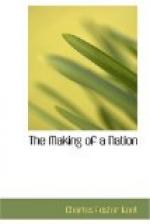Its inhabitants were slain as a great sacrificial offering to Jehovah, whose true character as one who loves all mankind was first appreciated by the inspired prophets of a much later From the plain of Jericho two or three roads led up to the central plateau of Canaan. The main road along the Wady Kelt ran past the villages of Ai and Bethel. At most they were small towns and easily captured. Along this highway went the Hebrew tribes later known as the Ephraimites and Manassites. The other roads led through the wilderness southwestward to the heart of Judah. The frontier town of Bezek, mentioned in the ancient narrative of Judges, has not yet been identified. The name is perhaps but a scribal corruption of Bethlehem or of Bethzur further to the south. The other towns ultimately captured by the southern tribes were Hebron, with its copious water supply, Debir to the southwest, and Arad and Hormah which lay on the borders of the South Country. The capture of these six or seven outposts represents the first stage in the conquest and settlement of Palestine. It was significant because it meant that the people from the wilderness had gained a foothold in the land where they ultimately found their home. It inaugurated Israel’s pioneer period. The Hebrews were no longer homeless wanderers in the desert, nor sojourners in a foreign land. At this point Israel’s history as a nation properly begins, although the complete union of the tribes was not consummated until nearly a century later.
IV.
WAYS BY WHICH THE ISRAELITES WON THEIR HOMES.
The impression conveyed by the later passages in the book of Joshua that the Hebrews within a period of seven years became complete masters of the land of Canaan is different from that made by the older records in Judges. These indicate that the process was gradual, extending through several generations. Except at two or three great crises, this conquest appears to have been peaceful rather than by the sword, a process of settlement and colonization rather than of capture. Today throughout many parts of Palestine one may still see, close to the cities, the black tents and the flocks of the Bedouin immigrants. In the days of the Hebrew settlement the Canaanites were largely confined to the fertile valleys. The uplands were still open to the men from the desert. Here the Hebrews pitched their tents and finally built their rude homes. In this more favorable environment their families and their flocks gradually increased until they began to encroach upon the territory already occupied by the older inhabitants. The resulting quarrels and differences were sometimes settled by the appeal to the sword; more frequently by alliances sealed by intermarriages. The early narrative in the ninth and tenth chapters of the book of Judges gives a vivid picture of the resulting condition: in the strong Canaanite city of Shechem, Hebrews and Canaanites had so far intermarried that Abimelech, a product of this intermarriage, succeeded his father Gideon as king of the first little Hebrew kingdom. At Shechem Hebrews and Canaanites also worshipped side by side in the common sanctuary, which was known as “the temple of Baal of the Covenant.”




